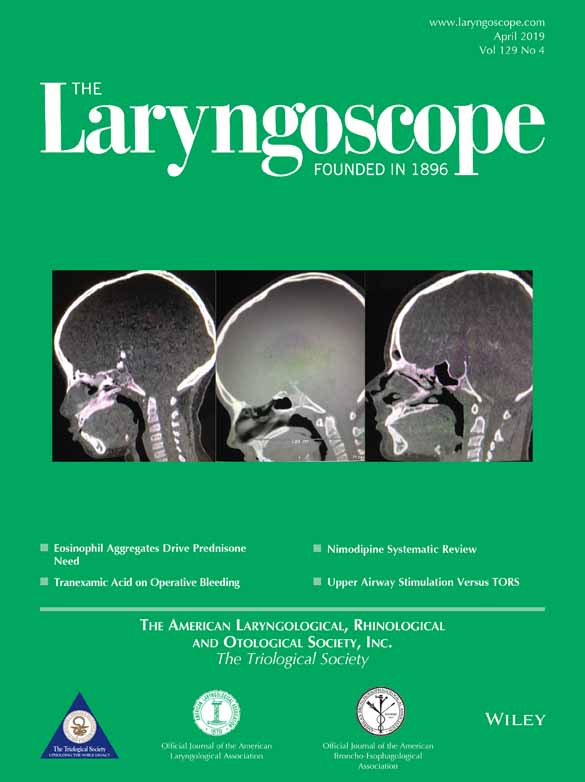Nimodipine improves vocal fold and facial motion recovery after injury: A systematic review and meta-analysis
Presented as a podium presentation at the American Laryngological Association Annual Meeting at Combined Otolaryngology Spring Meetings (COSM), National Harbor, Maryland, U.S.A., April 19, 2018.
The authors have no funding, financial relationships, or conflicts of interest to disclose.
Abstract
Introduction
Nimodipine is a calcium channel blocker that has been used to treat hypertension and vasospasm. Emerging evidence in the literature suggests that it is neuroprotective by reducing cellular apoptosis after neuronal injury and promoting axonal sprouting at the nodes of Ranvier.
Objectives
To conduct a systematic review of the usage of nimodipine in cranial nerve injury and to perform a meta-analysis to estimate the efficacy of nimodipine on functional recovery of the injured cranial nerves.
Methods
Literature search was performed in eight databases using preferred reporting items for systematic reviews and meta analyses (PRISMA) guidelines. Human studies that used nimodipine as a monotherapy for treating cranial nerve injury were included for review. Cranial nerve function recovery was the primary outcome measure.
Results
672 records were screened and 58 full texts in English were assessed. Nine studies were included in the final review. 5 of these, including 110 participants who received nimodipine for either recurrent laryngeal nerve or facial nerve injury and 556 controls, were used for meta-analysis. Nimodipine significantly increased the odds of vocal fold motion recovery (odds ratio [OR] 13.73, 95% confidence interval [CI] 6.21, 30.38, P < .01), and the odds of facial motion recovery (OR 2.78, 95% CI 1.20, 6.44, P = .02). Overall, nimodipine-treated patients had significantly higher odds of recovering vocal fold or facial motion compared with controls (OR 6.09, 95% CI 3.41, 10.87, P < .01).
Conclusion
Existing evidence supports the positive effect of nimodipine on vocal fold and facial motion recovery after injury. Future research should focus on randomized clinical trials comparing recovery rates between nimodipine- and placebo-treated groups. Laryngoscope, 129:943–951, 2019




